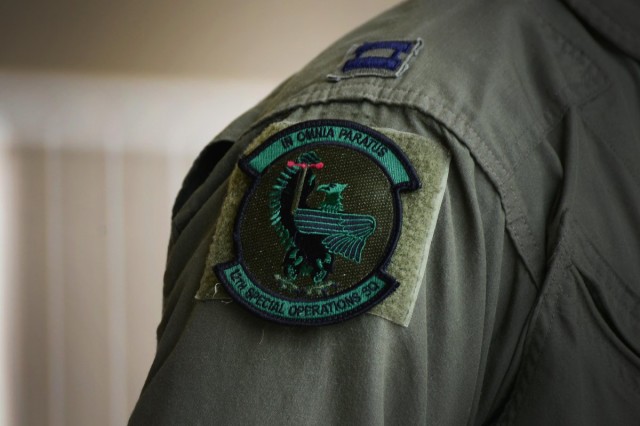 After its brief tenure as a squadron detachment here, the 12th Special Operations Squadron officially stood up to continue their mission of launch and recovery of remotely piloted aircraft during an official activation ceremony last Thursday.
After its brief tenure as a squadron detachment here, the 12th Special Operations Squadron officially stood up to continue their mission of launch and recovery of remotely piloted aircraft during an official activation ceremony last Thursday.
“This is the first squadron of its kind,” said Lt. Col. Josh Hartig, 12th SOS commander. “Typically, our work of taking off and landing RPAs exists as an element in a mission squadron or a formal training unit.”
As Air Force Special Operations Command’s only dedicated launch and recovery squadron, the mission of the 12th SOS is to launch and recover aircraft that the 2nd, 3rd and 33rd Special Operations Squadrons operationally employ.
“Because there is a delay when pilots fly the aircraft via satellite, our Airmen deploy downrange in order to take off and land aircraft via line of sight frequencies,” Hartig said. “This eliminates the delay and makes the handling closer to a traditional manned aircraft.”
This hands-on approach to unmanned aircraft set the standard for the squadron’s operational priorities: Mitigate risk during aircraft launch and recovery, keep combat capability at the cutting edge and provide pressure relief for RPA pilots and sensor operators.
“We have a truly distinct mission here,” Hartig stated. “We are the cradle of RPA Launch and Recovery for AFSOC.”
The Air Commandos of the 12th SOS contribute to the capability of all three mission squadrons, but also exists as a unique element, deploying to both CENTCOM and AFRICOM.
“Our Airmen are worldwide deployable,” said Hartig. “They can go to any patch of dirt and set up operations.”
Readiness, attention to detail and versatility have been the standard for the unit long before its activation as a squadron.
“Here at Cannon, the 3rd and the 33rd are the experts on ISR operations,” Hartig said. “We are the experts on launch and recovery, but we also maintain a residual capability for mission ops.”
In the transition between operating as a detachment and operating as a squadron, the unique skillset of 12th SOS did not permit a stand-down period—they were still putting 100 percent effort into their combat taskings while enduring the growing pains of their expansion.
“We started out as a detachment in October 2013,” stated Hartig. “That first eight months were very difficult. The initial cadre who stood up the Detachment worked miracles.”
Hartig called the flourishing unit a squadron of growth, stating that their mission and workload could evolve with the buildup of the squadron.
“We have not reached our end state yet,” said Hartig. “We are still gaining pilots and sensor operators, and our tasking will expand as the squadron does.”
As an innovative solution for RPA safety, the 12th SOS is being closely monitored by Air Combat Command as a potential template for similar operations.
“As the first squadron of its kind, we get to set the precedent for professionalizing RPA launch and recovery,” Hartig said. “Aviation is not risk-free. Things will bend and they will break. Professionalism is the best thing you can ask of a crew—what we are doing is building those professionals.”
Source: Press Release
